Zara wasn’t new to yoga. Or Pilates. Or foam rollers. But still, her back ached every morning. Her neck clicked like a glitchy app. No matter how many deep stretches or YouTube routines she tried, stiffness kept coming back like an annoying popup.
It wasn’t just discomfort. It was disrupting her focus, her workouts, even her sleep. “Is this what aging feels like?” she thought, scrolling through reels about mobility hacks and miracle stretches. But something deeper was going on.
Turns out! stretching was only treating the symptom, not the source.
That’s when she discovered chiropractic care and functional medicine.
If you’ve been stretching, massaging, and rolling endlessly with little progress, here’s the truth: chronic stiffness often signals something more complex.
It’s not just about inflexible muscles. It’s:
Chiropractic and functional medicine tackle these root causes, something stretching alone just can’t do.
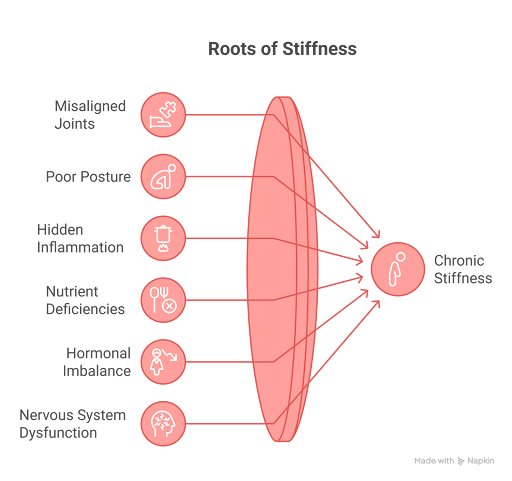
Chiropractic isn’t just spine cracking. It’s about realigning your skeletal structure to restore balance and motion.
Here’s how it works:
The result? Your muscles don’t have to be tense anymore. They’re no longer compensating for poor structure.
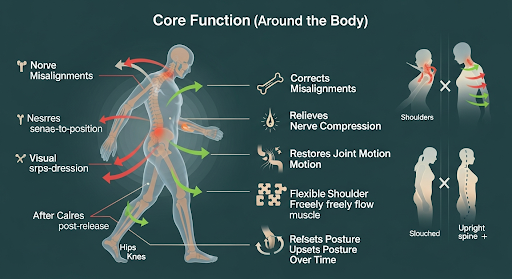
Functional medicine adds another layer to stiffness recovery, biochemistry.
Stiffness can be driven by:
A functional practitioner dives deep into your lifestyle, lab tests, and history to find these hidden drivers. No more Band-Aid fixes, just personalized protocols with real results.
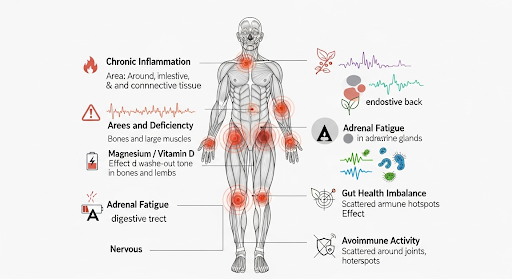
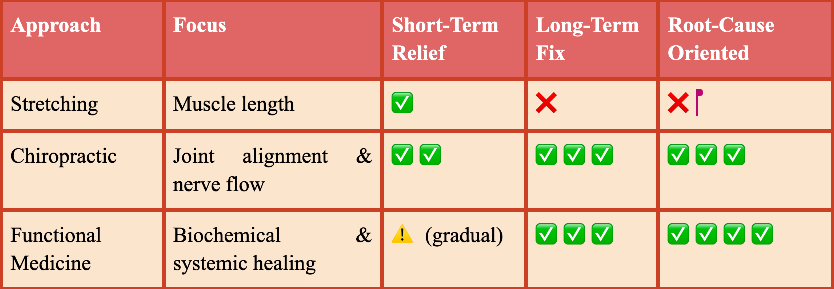
Modern stiffness isn’t just from inactivity, it’s tech neck, desk posture, sleep misalignment, processed diets, stress overload. The body responds to this load in layers:
That’s why an integrated approach is essential.
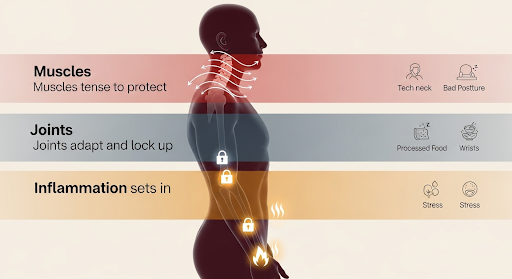
Real change often begins with small, targeted interventions and for many, that’s exactly what chiropractic and functional medicine delivered. Take Sam, 33, who struggled with persistent shoulder tightness that made even basic workouts frustrating. After just three chiropractic sessions and a personalized magnesium protocol, he was back to doing pain-free pushups. Ella, 40, battled neck stiffness and migraines for years until a gut-focused plan and posture correction unlocked lasting relief. And then there’s John, 27, a runner sidelined by stiff ankles post-runs until chiropractic ankle adjustments and an anti-inflammatory nutrition plan helped him lace up without hesitation.
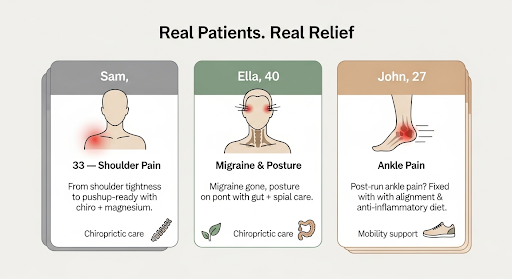
Forget quick fixes and trendy hacks. Real healing begins with structure, science, and personalization. A functional medicine and chiropractic approach creates a layered strategy that addresses the root, not just the symptom. Here’s what a comprehensive, patient-centered plan typically looks like:
This includes a full-body posture scan, spinal alignment check, and joint movement assessment to spot imbalances or mechanical stress points.
Goes beyond the surface. This stage may involve blood work, inflammation markers, nutrient profiling, lifestyle history, and a deep dive into your current diet and sleep hygiene.
Based on your body’s needs, your care plan may include:
This routine is not a short-term patch, it’s a sustainable recalibration of how your body moves, heals, and thrives.
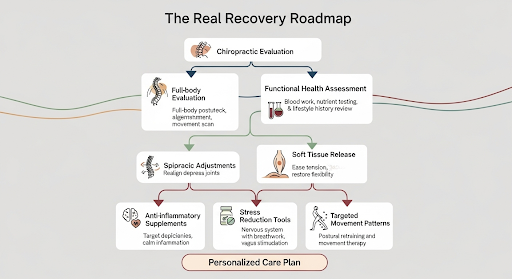
Stiffness isn’t something you have to live with. It’s your body’s way of asking for a smarter solution, not another random stretch or temporary fix.
It’s time to shift from guessing to addressing.
Functional medicine and chiropractic care together offer a plan rooted in real assessment, alignment, and personalized action. The result? Not just relief, real freedom.
Ready to ditch the stiffness and move like yourself again?
Start your customized care plan today.
If stiffness is recurring despite stretching, worsens with inactivity or stress, and is accompanied by fatigue, headaches, or gut issues, it’s likely systemic. A chiropractor and functional medicine provider can help you pinpoint the exact cause.
Yes! Poor gut health can lead to inflammation, which triggers muscle and joint stiffness. Functional medicine addresses this by healing the gut barrier, optimizing digestion, and restoring balance.
Mild soreness can occur, similar to a workout, as your body adjusts to new alignment. It typically fades in 24–48 hours. Hydrate and rest to support the healing process.
Magnesium, Omega-3s, Vitamin D, turmeric, and collagen are commonly used. A practitioner can personalize your supplement plan based on lab tests.
Absolutely. Stress activates cortisol and adrenaline, which tighten muscles and restrict circulation. Addressing mental health is key in long-term mobility plans.
Yes!stretching works on muscles, while chiropractic targets deeper structural alignment. Together, they create real change.
Poor posture compresses joints and nerves, forcing muscles to overwork. Over time, this leads to stiffness, pain, and dysfunction.
Not always. While age-related wear happens, many young people also suffer due to lifestyle factors. The goal is to treat causes not blame age.
Some feel better after 1–2 sessions, deeper results often take a few weeks of consistent care. Functional medicine changes may take longer but are long-lasting.
Yes! They optimize recovery, enhance performance, and prevent injuries by correcting imbalances and supporting the body at a cellular level.

